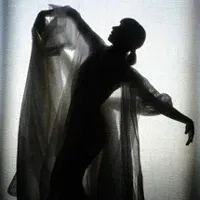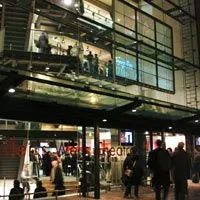Eonnagata
Written by

By James Hadley in London
How could I not be intrigued by a dance theatre show about an 18th century soldier and spy who spent much of his life disguised as a woman, devised by one of the top dancers in the world, one of the top theatre makers in the world, and an award-winning choreographer (who I have to admit I hadn't heard of before!).
Eonnagata was only on for a short season at Sadler's Wells, but is returning in June.
It felt like a bit of a scratch performance - a collection of scenic images and choreographic ideas around the theme of gender identity, circling around a smudgy portrait. But featured exquisite production values, as you would expect such creative collaborators could attract. It's well known that Robert Lepage thinks of opening night as the first rehearsal on another level, and I imagine this work is at an early stage of an evolutionary journey. Seeing it on its third performance, it felt quite raw - you could still get a sense of how sections had been devised, and some still felt like interesting ideas being explored on the floor.
The initial inspiration was the life of the Chevalier d'Eon, who disguised himself as a woman to spy, and was later forced to live in this disguise permanently by his enemies. Lepage decided this story, when explored alongside the dynamic of the onnagata - male kabuki actors who perform female characters onstage.
The story goes that Lepage had expected to direct when he set out on a creative collaboration with dancer Sylvie Guillem and choreographer Russell Maliphant, but they expected him to dance and act alongside them, each a variation of the Chevalier. And Lepage is certainly a master of precision as a performer. But no more so than Sylvie Guillem, who I'd missed and heard nothing but rave reviews of when she toured to the 2008 NZ International Festival of the Arts in 'Sacred Monsters'. The way she moves her body onstage - just the slightest twist of a wrist even - is physical refinement personified, and was worth the ticket price alone. She has danced in several of UK choreographer Russell Maliphant's works, since shocking the ballet world by transfering her focus to contemporary dance despite being acclaimed as the leading ballerina of her generation.
Just as impressive as these three performers were the creative contributions made by lighting designer Michael Hulls and costume designer Alexander McQueen. The lighting operated in various moving blocks of light around the floor, sometimes bars of light flickering on and off to make visual rhythms alongside performers duelling onstage, at other times exploring ways of having a moving light source - swung from ropes for instance. One scene was lit exclusively from a fluorescent tube hidden on the inside of a table frame which doubled as a doorway, creating dynamics of entering and exiting a consciously lit space which was also a transitional space of identity.
And the costumes were wonderfully innovative deconstructions of gender, each built up in layers around a body suit which both flattened female breasts and added a codpiece to Sylvie Guillem's figure. The next layer played with the skeleton of a full crinoline skirt, made of a rubber like material so that it spun around the dancers but could also be fallen on and crushed. Over these structures for redefining bodies, various kimonos or 18th century formal suits and dresses were worn - creating strong visual statements about the main character's manipulation of gender identity as a disguise.
While the story of the Chevalier d'Eon's life was not easy to follow, and the piece punctuated with somewhat awkward feeling speeches from the three performers narrating sections of his biography, the imagery was spectacular enough that you forgave the lack of a satisfying narrative. One scene revealed a beautiful Japanese woman twice the height of a normal person, dressed in a brilliant blue kimono, who twisted and swooped around, lowering her head until it was revealed to be a mask held by Russell Maliphant, who then stepped right out of the kimono and into a dance. Another section saw Sylvie Guillem performing in silhouette against the outlines of a transparent kimono, before dancing into it, a mirror to the other scene. And then there was a lovely movement sequence of Robert Lepage on a diagonally sloped mirror.
But ultimately the piece was not more than the sum of its parts. And that's not a criticism - for how encouraging to see a trio of some of the most talented performers in the world, with enviable production resources at their disposal, and the path to a satisfying piece of theatre is still far from easy.
